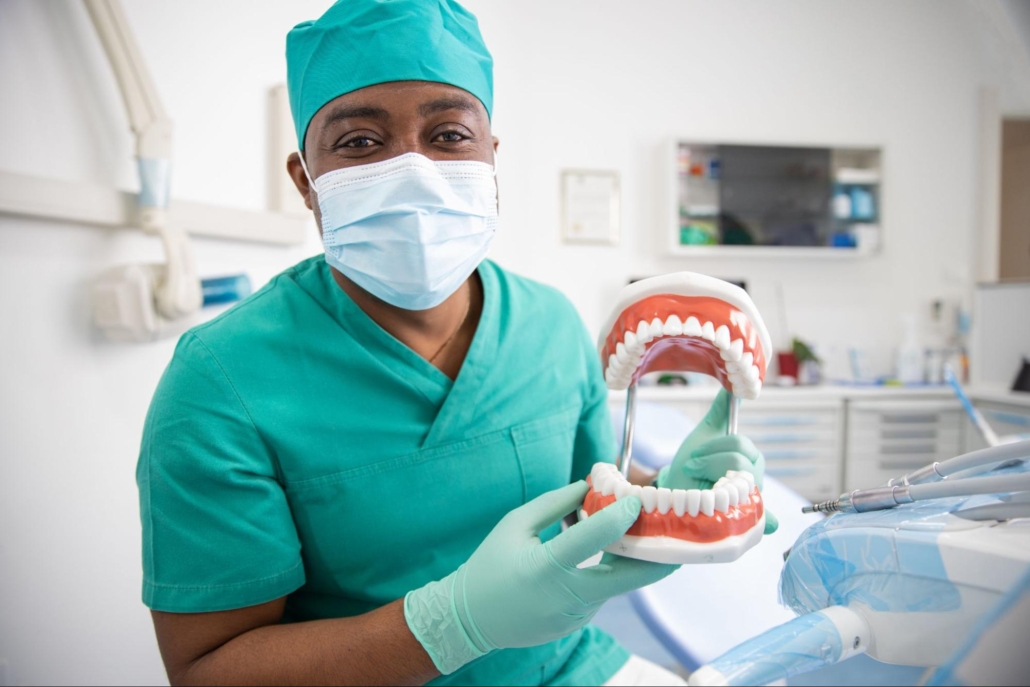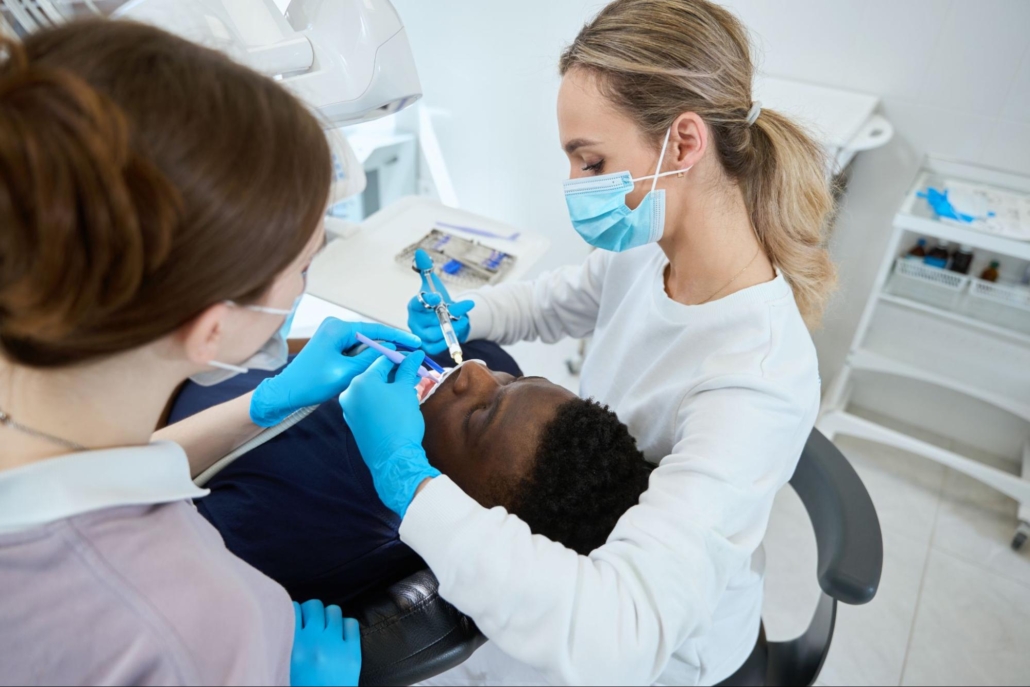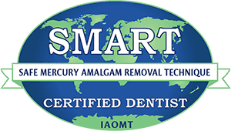Exploring the Benefits of Ozone Treatment in Dentistry
In recent years, ozone treatment has surged in popularity as a natural, noninvasive solution for various dental issues. Renowned for its potent antimicrobial properties, ozone is an effective oxidizing agent that disinfects and promotes healing in oral tissues. This treatment boasts manifold benefits in dental health maintenance, which are increasingly recognized, especially for its efficacy in addressing cavities, gum disease, and oral infections.
Given the abundance of information available about ozone treatment, it is essential to navigate it effectively. Let’s start with the basic details you need to know to avoid information overload.
Delve into the advancements and advantages of ozone treatment technology in dentistry and how it revolutionizes dental care:
Advancement of Ozone Treatment Technology in Dentistry
The advancement of technology in dentistry benefits both dentists and patients. As time passes, innovative treatments continue to revolutionize the way we approach oral health. One of the best advancements in dentistry is ozone treatment, a powerful tool in the dentist’s arsenal, offering many benefits beyond traditional methods.
Let’s explore ozone treatment’s known benefits:
Antimicrobial Action
Ozone has strong antimicrobial properties, capable of eliminating bacteria, viruses, fungi, and other pathogens. By using ozone gas or ozone-infused water, dentists can successfully disinfect dental cavities, root canals, and periodontal pockets, lowering the risk of infection and promoting healing.
Non-Invasive Treatment
Ozone treatment is noninvasive and painless, making it well-tolerated by patients of all ages. Unlike traditional dental procedures that may involve drilling or surgery, ozone therapy requires no anesthesia or incisions, minimizing patient discomfort and recovery time.
Preservation of Healthy Tissue
Ozone treatment targets diseased or infected tissues while preserving healthy surrounding tissue. This selective action allows dentists to remove decay or infection without causing unnecessary damage to adjacent structures, promoting optimal healing and minimizing the need for invasive interventions.
Cavity Reversal and Remineralization
Ozone treatment has shown promising results in reversing early-stage dental caries (cavities) and promoting remineralization of tooth enamel. Ozone gas or ozone-infused water can penetrate deep into the tooth structure, neutralizing acids and promoting the formation of new mineral deposits, strengthening weakened enamel, and preventing cavity progression.
Treatment of Gum Disease
Ozone therapy effectively treats gum disease (periodontitis) by targeting and eliminating bacteria that cause inflammation and infection of the gum tissues. Ozone therapy can be used directly on periodontal pockets to reduce inflammation, promote tissue regeneration, and support overall gum health.
Reduced Teeth Sensitivity
Ozone treatment can help alleviate tooth sensitivity caused by exposed dentin or nerve irritation. Ozone therapy can strengthen tooth structure, seal microscopic tubules in the dentin, and desensitize nerve endings, relieving pain and discomfort associated with sensitive teeth.
Safe and Environmentally Friendly
Ozone treatment is a safe and environmentally friendly dental therapy that does not produce harmful by-products or residues. Ozone gas quickly decomposes into oxygen after use, leaving no chemical residues or environmental pollutants behind, thus making ozone treatment a sustainable option for dental care.
Ozone treatment offers a range of benefits in dentistry, including its antimicrobial action, non-invasiveness, tissue preservation, cavity reversal, gum disease treatment, sensitivity reduction, and safety. As science progresses, ozone therapy is on track to become an essential component of modern dentistry and provide patients with a natural and effective way to keep their teeth healthy.
 How Does Ozone Treatment Work?
How Does Ozone Treatment Work?
Ozone treatment, also known as ozone therapy, is a medical treatment that utilizes ozone gas to treat various medical conditions. Ozone (O3) is a molecule composed of three oxygen atoms, a highly reactive form of oxygen. Ozone therapy has been used for decades in medicine and is gaining popularity due to its potential therapeutic benefits.
To understand it better, here’s how ozone treatment works and its applications:
Production of Medical-Grade Ozone
Ozone is produced using medical-grade ozone generators. These generators generate ozone by passing medical-grade oxygen (O2) through an electric field or ultraviolet light. This process creates ozone gas, which is then administered to the patient.
Dental Applications of Ozone Therapy
Ozone therapy offers several administration methods tailored explicitly for dental applications, providing safe and effective treatment options for various oral health conditions. Some standard methods include:
Ozone Dental Gas Injection
For ozone dental gas injections, a specialized dental instrument is used to inject ozone gas into the affected mouth areas. The gas penetrates deeply into dental cavities, disinfecting and sterilizing the area and promoting natural remineralization of tooth enamel. It is commonly used to treat dental caries (cavities) and prevent further decay.
Ozone Dental Water Irrigation
Ozone can be added to water to create ozonated water, which can be used for dental irrigation during procedures such as root canal therapy or periodontal treatment. Ozone water irrigation helps disinfect the treatment area, kill bacteria, and promote healing, reducing the risk of infection and supporting oral health.
Ozone Dental Oil Application
Ozonated oils, such as ozonated sunflower or olive oil, are topically applied to the gums and oral tissues using a dental swab or applicator. Ozone oil helps soothe inflamed gums, promotes tissue regeneration, and inhibits the growth of harmful bacteria, making it helpful in treating gum disease (periodontitis) and oral infections.
Ozone Dental Gel or Cream
Ozone-infused dental gels or creams can be applied directly to the teeth and gums for targeted treatment of specific dental conditions, such as tooth sensitivity, dental hypersensitivity, or oral ulcers. These topical treatments promote general oral health, strengthen tooth enamel, and lessen sensitivity.
Ozone Dental Rinses
Ozone dental rinses or mouthwashes contain ozone-infused water or saline solution that can be swished around the mouth for a specified duration before spitting out. These dental rinses help kill bacteria, neutralize oral acids, and freshen your breath, providing a natural and noninvasive approach to maintaining oral hygiene and preventing dental problems.
Mechanism of Action
Ozone exerts its therapeutic effects through several mechanisms:
Oxidative Stress
Ozone generates reactive oxygen species (ROS), which induce oxidative stress in the body. Oxidative stress can kill bacteria and viruses, boost tissue regeneration and repair, and activate the immune system.
Modulation of Immune Response
Ozone therapy modulates the immune system by increasing the production of cytokines, which are signaling molecules involved in regulating immune responses.
Improved Oxygenation
Ozone therapy can enhance the delivery of oxygen to tissues by promoting hemoglobin’s oxygen release and boosting blood flow to areas deficient in oxygen.
Anti-inflammatory Effects
Ozone therapy has anti-inflammatory qualities and can lessen inflammation by preventing the release of pro-inflammatory mediators.
Ozone therapy offers safe and efficient treatment options with various applications across medical specialties. Due to its antimicrobial qualities and capacity to encourage tissue healing, ozone therapy is positioned to be a major player in contemporary healthcare. With further research, it is becoming more apparent how it can supplement traditional treatments and treat a wide range of health issues, which bodes well for patient care and well-being in the future.
Integrating Ozone Therapy into Dental Practice
Integrating ozone therapy into dental practice can offer various benefits, as ozone has antimicrobial properties and can aid tissue healing. Here’s a basic guide to integrating ozone therapy into dental practice
Education and Training
The importance of dentists and dental hygienists undergoing specialized training in ozone therapy cannot be overstated. This includes understanding the science behind ozone, its applications in dentistry, safety protocols, and proper administration techniques.
Invest in Equipment
Purchase high-quality ozone therapy equipment designed for dental applications. This may include ozone generators, delivery systems (syringes or dental units), and appropriate safety gear.
Patient Education
Educate patients about the benefits of ozone therapy in dentistry. Explain how ozone can help treat dental infections, reduce inflammation, and promote tissue healing. Address any concerns they may have regarding safety and effectiveness.
Treatment Protocols
Develop standardized treatment protocols for various dental procedures where ozone therapy can be beneficial. This may include treating periodontal disease, caries management, root canal therapy, and post-operative care.
Incorporate into Existing Procedures
Integrate ozone therapy seamlessly into existing dental procedures. For example, ozone gas or ozonated water can be used as a disinfectant before dental procedures, and ozonated oils can be used for oral hygiene maintenance.
Collaboration with Specialists
Foster a collaborative relationship with other healthcare professionals, such as medical doctors or naturopaths, who use ozone therapy in their practice. This can lead to a more comprehensive approach to patient care and facilitate referrals between practices.
Stay Updated
Stay updated with the latest research and developments in ozone therapy and its applications in dentistry, ensuring that you provide your patients with the most effective and evidence-based treatments.
Compliance and Safety Regulations
Adhere to regulatory guidelines and safety standards when incorporating ozone therapy into dental practice. This includes properly handling and storing ozone equipment, ensuring staff and patient safety, and complying with legal requirements.
By integrating ozone therapy into their practice, dentists can offer patients an additional treatment option for various dental conditions while enhancing oral health outcomes.
 Exploring the Science Behind Ozone Treatment
Exploring the Science Behind Ozone Treatment
Ozone treatment has several therapeutic advantages, such as immune modulation, anti-inflammatory properties, and reduction of oxidative stress. It’s utilized across medical fields for infectious diseases and chronic pain. For safety reasons, speaking with a medical professional before starting ozone therapy is imperative.
In dentistry, ozone treatment transforms traditional methods with its antimicrobial properties and tissue-preserving nature. Known for its healing properties, ozone therapy is becoming an increasingly important component of dental care. As research uncovers more about its efficacy, ozone therapy holds promise for enhancing dental outcomes. Embracing the benefits of ozone treatment and understanding its science can position it as a key aspect of modern dental practice.
Get the latest insights and expert advice on health and wellness on Frederick Dreher DDS PC’s blog – your guide to a healthier life awaits.






Leave a Reply
Want to join the discussion?Feel free to contribute!